A couple of the recent interviews with stand-ins that we’ve done for Stand-In Central have come from a network of people in Florida. That network led back to New York, when former stand-in Marc Baron from there came to our attention.
Marc is notable not just for being a stand-in for some big name stars, but also for being on the New York Board of SAG-AFTRA. In addition to providing some fantastic stories and photos from his time as a stand-in, he also comments in this interview on issues relevant to stand-ins, including crediting and pay.
Have a read.
– The Editor
SIC: Hi there. First things first: What’s your name and what do you do?
MB: My name is Marc Baron. I’m an actor, a singer, a director, as well as a screenwriter. I’ve been a member of the New York Board of SAG-AFTRA for over four years. For The Lambs, the oldest professional theatrical club in America and established in NYC in 1874, I serve as Boy, which is their equivalent of Vice President.
Among other things, I’m a council member of the Episcopal Actors Guild of America, a charity for the benefit of members of the entertainment industry, and I’m co-founder and co-owner of Oroloro Entertainment, an indie film company. I have been a judge on a NYC-based film festival for three years called NYC Filmmaker’s Festival, and I co-host networking events for indie filmmakers.
SIC: You also worked as a stand-in for many years. For which actors did you notably stand in, and on what notable projects?
MB: I’ve worked in over fifty projects as a stand-in. I stood in for Matthew Broderick in the films Family Business and The Freshman, Sean Penn in Sweet and Lowdown, and John Pankow in the films The Secret of My Succe$s, *batteries not included, and Mortal Thoughts … and many others. I stood in for five different actors on Mickey Blue Eyes!
SIC: You have a professional history as a stand-in, and now you are on the New York board of SAG-AFTRA. What was your progression from standing in to reaching such a visible position in the union?
MB: I do believe a union is only as strong as the members who contribute to it. I first joined AFTRA in 1979, and SAG in 1985. Shortly thereafter I began doing committee work in SAG and, in 1995, received the Joseph C. Riley Award for service to the Guild for my work on the Background Advisory Committee.
Over the years I had served on many committees and had been a board replacement for several nation board meetings (“plenaries”). I had resisted actual board service until about five years ago when many board members said they needed me. Once elected, I took it upon myself to be a voice for the members who do background, photo-double, and stand-in work. Although I am no longer seeking that work, I know firsthand the issues facing those who do that work. One of my goals in serving on the board was to help the merge of the two unions. Now that that’s done, I’m not sure if I’ll run again for board next summer.
SIC: From your perspective as a board member, what kinds of issues do you see union stand-ins face these days?
MB: Stand-ins are sort of a hybrid — half actor and half crew. Good stand-ins can truly contribute to the making of the film but are usually not recognized, and the work itself can be difficult. Overall, stand-ins are somewhat underappreciated. The difference in pay from background and stand-in should be greater. Sadly, it is also becoming more common that stand-ins are being asked to also do background work at the same time.
SIC: An important letter from union member Kat Murello was in a recent issue of Screen Actor regarding crediting stand-ins in film and television. From your perspective as a SAG-AFTRA board member, what needs to happen in order for stand-ins to be regularly credited in the end credits? And do you have any advice for an individual stand-in on getting listed in the credits of a film or TV show?
MB: I think it will be a difficult battle get stand-in credits as part of the Basic Codified Agreement (BCA). I’ve been in several negotiations and when something is “put on the table,” often the first response is what are we willing to trade for it. Some stars, such as Dustin Hoffman, have their stand-in in their contract, and they include their stand-in’s getting credit. Since almost every principal has a stand-in it would be cumbersome to list all of them, and then the focus could shift to only giving the major leads’ stand-ins credit. But then we could be faced with a producer who then swaps out stand-ins on a regular basis to avoid that “lead” stand-in credit.
As much as I’d like to see the BCA demanding credit for stand-ins, I think improved pay is more important. As it stands now, it’s up to the producer to give us credit, and some do — and some don’t. One approach is do the best job you can, and toward the end of the production actually ask a producer or AD if you could get stand-in credit. In some cases, if you work really well with the actor, you can mention that you’d be interested in work with them again.
SIC: You’ve accumulated a number of wonderful stories from your time as a stand-in. What were some of the standout memories?
MB: I started pursuing stand-in work because I’d rather be on set working than sitting in holding waiting. That’s just me. By the time I got the interview for Family Business, I already had a good reputation. Of all my work, the three films that stand out are Mickey Blue Eyes, Sweet and Lowdown, and Family Business.
SIC: Tell me about your Mickey Blue Eyes experience.
MB: For Mickey Blue Eyes, I was brought in as a replacement, and the DP Don Thorin expected a lot of his stand-ins. On the first night after the first setup I knew what my next mark would be. When Don came over to check lighting levels, he challenged me about where I was. Don is an imposing character, but I was confident. After the shot he told the AD I was a keeper. I stood in and doubled for five different actors.
Don turned out to be a good guy. He looked after his second team and let us know when he was happy, or wasn’t. Wished I worked with him again, he was a consummate DP. It was a tough shoot, a lot of night shots, and outside in January and February. There were times when they brought us second-teamers in to rehearse with Hugh Grant, and to preset camera marks. Hugh was great, from early on greeted us by name, and years later I worked with him on two more films and he always came over to say hello.
SIC: And Sweet and Lowdown?
MB: Working with Woody Allen seems to be everybody’s dream, and I got to spend four months with him as a stand-in on the film. Again, here my reputation got me the job: Richard Patrick, the 1st AD, worked with me in other projects, and Richard was the 1st AD on Mickey Blue Eyes. Here, the work was very different than other times. The norm is to watch the first-team rehearsal, then repeat that for the setup. Here, Woody would often use me to work out the shots, then bring Sean Penn in later. The challenge here was we were not allowed to have sides.
After a while I began to understand “Woodyspeak.” Sean was going through a tough time early in the film — his father was about to die. We eventually got a little friendlier when I found out my agent was Sean’s mother’s agent. Our DP was Zhao Fei, a great DP but direct from China and barely spoke English. There were translators on the set for him. Eventually Zhao, his translator Shuping, and myself would become a “group.” I entertained myself by trying figure out what the scene was about purely by looking at the set.
There were often times when I photo-doubled for Sean. Some time later I ran into Sean while he was preparing to film The Interpreter — he was friendly and asked if I was going to be his stand-in and double again. My hair has been very silvery-gray since I was 25, and it’s always been dyed to match an actor. I told Sean if he wanted me, I’d be happy to do it, I just need to speak with the hair department. But I never did get called for that job.
SIC: What was your experience like standing in on Family Business?
MB: I call my Family Business experience my masters class in film. Imagine spending almost seven weeks with Matthew Broderick, Dustin Hoffman, Sean Connery, and Sidney Lumet!
From day one it was just pure fun — I could talk at length about it. Dustin is hugely funny on set and extremely generous. When days went long, one of his assistants would show up with pizza or hamburgers for the entire crew. He would always have a joke or funny story. My sense of humor was similar, so I would often show him a situation that was funny and he’d go off on it. We filmed over the holidays, and the day before Thanksgiving I had a 22-lb. turkey delivered with a note, “Eat the bird, Dustin.”
Matthew and I were like best buddies on set, and we still keep in touch today. Just a great guy. I spent a few hours talking with Sean Connery about — of all things — musical theater! Did you know he was supposed to be the original “Daddy” Warbucks?! And Lumet: Not only a master but a gentleman. I always choose to be right at camera whenever I can. And so many times Sidney would turn and explain what he was doing. The combination of what I learned, and the fun we had, was priceless. Our final day was close to Christmas. On the back page of Variety the producers took out a full-page ad that read “Sean, Dustin and Matthew … Our thanks for making it a pleasure to come to work … for your professionalism, generosity … and all the great laughs!” — and the page had the name of everyone, including the stand-ins.
I worked again with Matthew on The Freshman, which shot three weeks in NY and nine weeks in Canada. Matthew led the fight to bring me up to Canada, the DP joined in, but the Canadian government would only allow it if I were on a principal contract. But the producers felt that would be too costly. Matthew asked me if I would be willing to be in his contract as his permanent stand-in, but that never came together.
SIC: Now, what’s this story of a poem you wrote on set?
MB: Oh yes! I often keep myself busy when not needed on set — and on Family Business I kept busy and creative by rewriting The Night Before Christmas for the gang. It began “A night before Christmas and all through the set / Not a person was stirring, not even Lumet” … and so on. At one point Matthew grabbed the paper and walked off reading it. A few minutes later Dustin returned with the poem and began lecturing me about how I need to create my own work — something he told me almost daily for five weeks. For our work on Christmas Eve, the producer printed the poem on the back side of the callsheet. And years later, after heeding his advice, I reached out to Dustin’s office and they spent over an hour with me going over what steps I was taking in putting together a project. I still keep in touch with one of the producers, Jennifer Ogden … and years later I still run into a crew person who remembers me by that poem.
SIC: That is just incredible, all these years later! Marc, you became so trusted as a stand-in that understandably from time to time you were asked to “show the ropes” to people on set who’d never stood in before. How did that happen? And what are the main pointers you have for someone who’s never stood in before and just steps on set?
MB: I would be on a set working when a 1st or 2nd AD asked me to work with someone who had never done stand-in. There are many things that make a good stand-in. Always be near camera and aware of what’s going on. Never leave set without letting an AD know. Mike Haley, then a 1st AD on Family Business, always appreciated how I was on the mark before he called for me. He called me one of the best in the business, as did Bill Fraker, the DP for The Freshman. I was so flattered by hearing that.
It’s also important to get along with the crew — they are your allies and will have your back. And quickly learn how the actor you’re standing in for wants to be treated and related to. Most are very relaxed and will treat you like a fellow actor; some are very intense — “in their head” — working on their character. You need to know when to be friendly or when to give them space. I know stand-ins who have been asked to run lines with the principals.
SIC: Have you ever been upgraded as a stand-in and given a principal role?
MB: Sadly, only once. I was standing in for John Pankow again, this time on Mortal Thoughts. The director Alan Rudolph was a down-to-earth guy, very friendly — often would sit with me at lunch. John Pankow actually asked Alan if there was some way to get me a role. I had previously worked with just about every crew member, including the 1st AD, Bob Girolami. Bob had used me many times as a stand-in, including on The Secret of My Succe$s.
There was a wedding reception scene, and Bob kept sending me off to wardrobe and put me into something that did not match Pankow’s wardrobe. At one point wardrobe took me off to a tuxedo shop and to be fitted in a full tux. On set I told Bobby I didn’t match, and he answered, “You’re getting something you should have gotten years ago.” I was put in a small scene with Demi Moore and John Pankow playing her cousin Joey in a short, funny bit. The take left Alan laughing — and we only did one take. When the film released, they gave me billing in the end role much higher than expected — as a way of saying thanks.
SIC: Oh my goodness. That’s an incredible upgrade story, Marc! Congratulations, years later! Have you been able to further your career as a result of the connections you’ve made as a stand-in?
MB: From the encouragement I got from Dustin, Matthew, and my agent, I began to refocus my career. I always looked on stand-in work as a step to something more. I had an actor-friend who also wrote, and together we formed our first company called Blue Shirt Productions. We had a third partner who owned a sound stage in Manhattan where we had an office. A little while later the owner sold the space and we shut down BSP. Then my business partner, Joe Cirillo — an NYPD who retired and became an actor — and I formed our current company, Oroloro Entertainment, LLC. We now have many projects in development written by us, individually or jointly.
Over the years we have gotten a lot of support and encouragement from relationships that began on the set when I was a stand-in. Dejan Georgevich, an excellent DP and cinematography educator, is working with us. Jennifer Ogden, producer of Family Business, has read our screenplays, guided us, and given us quotes.
SIC: What are you up to now, Marc?
MB: I’m always looking for acting roles, voiceover work, singing, … and writing. A lot of my time is now dedicated to financing our comedy film, MegaBall$. I wrote this comedy while out of town taking care of my mother during her final days. We have some financing in but have a long way to go to reach our budget of $700,000. We attend networking events and conferences when we can — making more connections. We just attended the IFP Film Week conference, and from a meeting there we were urged to apply for a grant from the Tribeca Institute. We’re very fortunate that people really like our screenplays and want to join our team. Our website has an extremely short teaser filmed without crew, sound, or script for less than $100, testimony from our casting director … and more.
I am busy with meetings of SAG-AFTRA, and continue to sing, direct, and produce at The Lambs. Also, I’m working on a screenplay that includes a story involving a stand-in, using some of the funny moments experienced on set. In November I’ll be playing a principal role in a low-budget feature in New York.
SIC: Well, that just about wraps things up. Marc, anything else you care to share?
MB: Yes. Stand-in work can be very rewarding, but it’s hard work. While you’re earning money toward health and pension — and paying the rent — you’re also building contacts and a reputation. And when done right, it can be a great learning experience and fun … and perhaps lead to new phases of your career.
SIC: Thank you very much for your insights, Marc!
MB: No problem!
Marc Baron lives in Manhattan and continues singing, acting, and writing , and has one of the oddest survival jobs — giving bus tours about the making of The Sopranos. The job found him because of having done stand-in work on thirteen episodes of the HBO show, and it has garnered him much international press, even giving him fans. Marc’s entertainment company is on Twitter @Oroloro and on Facebook.

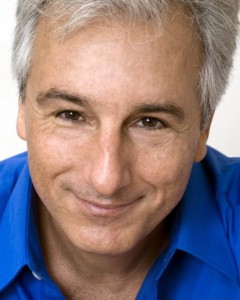
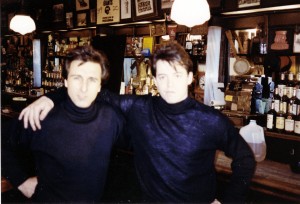
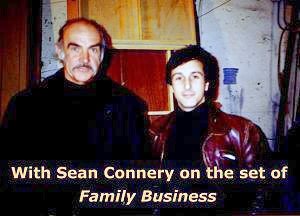
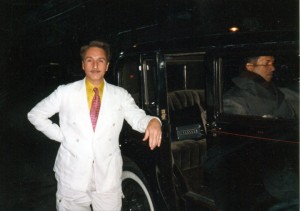
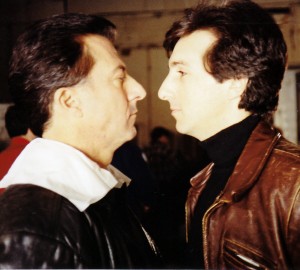
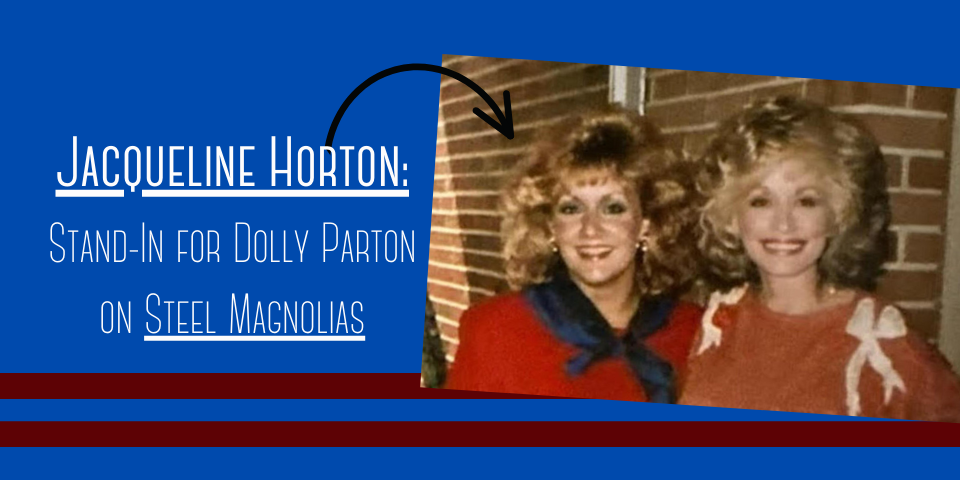
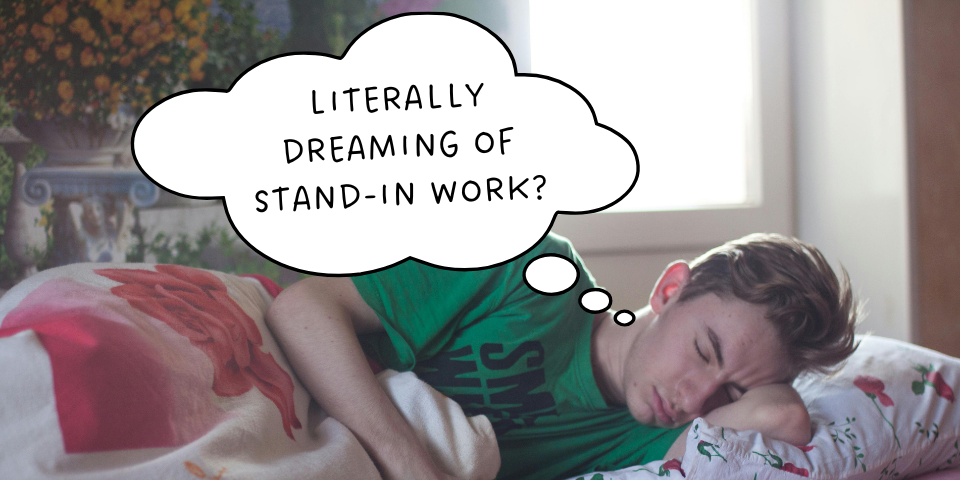
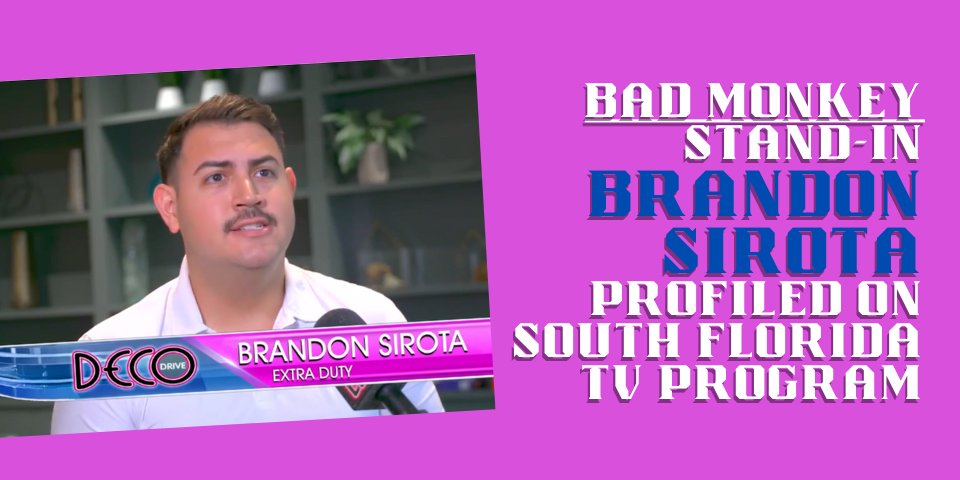
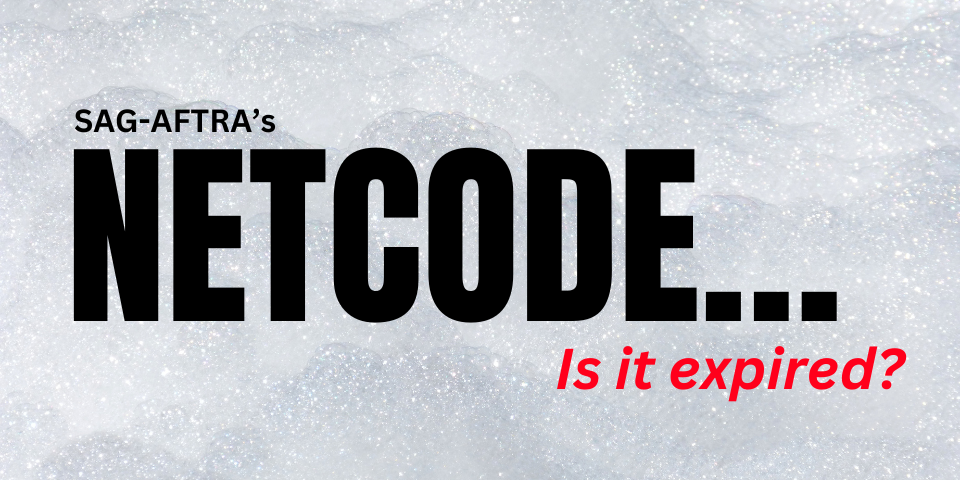
Leave A Comment